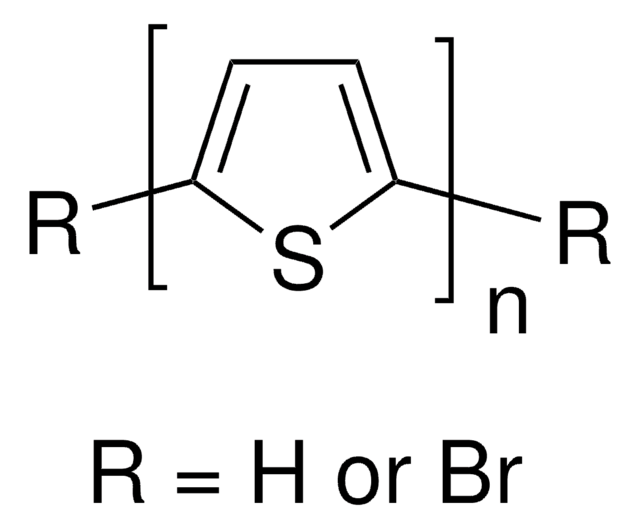おすすめの製品
詳細
Band gap: 2.27 eV
Eox = 0.45 V
Solution processable (chloroform, chlorobenzene, etc)
LIFT transferable
フォーム
solid
分子量
Mw 10,000-25,000 by GPC
色
brown
溶解性
>5 mg/mL (in CHCl3)
λmax
473 nm in toluene
軌道エネルギー
HOMO -5.24 eV
LUMO -2.97 eV
保管温度
15-25°C
関連するカテゴリー
アプリケーション
保管分類コード
11 - Combustible Solids
WGK
WGK 3
引火点(°F)
Not applicable
引火点(℃)
Not applicable
適用法令
試験研究用途を考慮した関連法令を主に挙げております。化学物質以外については、一部の情報のみ提供しています。 製品を安全かつ合法的に使用することは、使用者の義務です。最新情報により修正される場合があります。WEBの反映には時間を要することがあるため、適宜SDSをご参照ください。
Jan Code
906921-BULK:
906921-500MG:
906921-VAR:
最新バージョンのいずれかを選択してください:
資料
Professor Tokito and Professor Takeda share their new materials, device architecture design principles, and performance optimization protocols for printed and solution-processed, low-cost, highly flexible, organic electronic devices.
Professor Chen (Nankai University, China) and his team explain the strategies behind their recent record-breaking organic solar cells, reaching a power conversion efficiency of 17.3%.
ライフサイエンス、有機合成、材料科学、クロマトグラフィー、分析など、あらゆる分野の研究に経験のあるメンバーがおります。.
製品に関するお問い合わせはこちら(テクニカルサービス)








